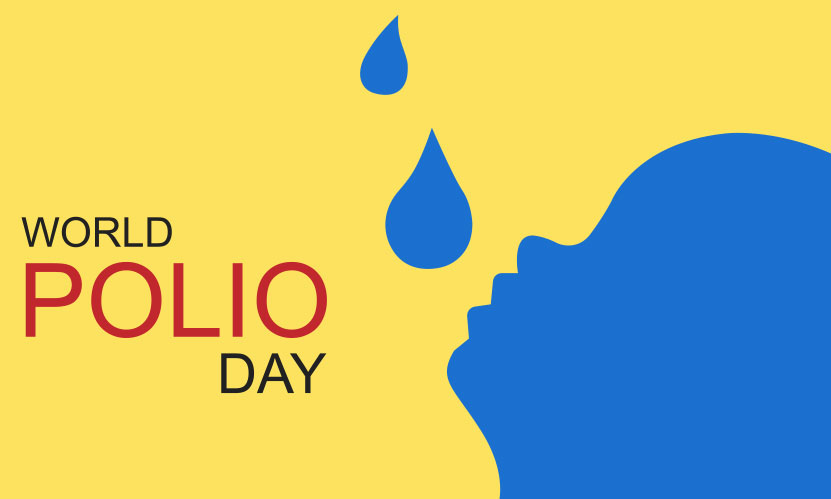Context:
Recently, World Polio Day was observed worldwide on 24th October to raise awareness of the significance of polio vaccination to protect every child from this devastating disease.
About World Polio Day
The theme for 2024 is “A Global Mission to Reach Every Child,” highlighting ongoing efforts to vaccinate all children, especially in high-risk areas.
- Once endemic in more than one hundred countries, today polio remains endemic in only two countries – Afghanistan and Pakistan.
World Polio Day was established in 1988 by Rotary International to commemorate the birthday of Jonas Salk, who developed the first effective polio vaccine in 1955.
Objective: The day is dedicated to educating the public on polio eradication, garnering support for vaccination programs, and celebrating the progress made toward a polio-free world.
Global Campaign: The Global Polio Eradication Initiative (GPEI) was launched in 1988 after the World Health Assembly passed a resolution to eradicate polio.
- The GPEI is a public-private partnership led by national governments with six partners – the World Health Organization (WHO), Rotary International, the US Centers for Disease Control and Prevention (CDC), UNICEF, Bill & Melinda Gates Foundation and GAVI – to mobilize resources and promote vaccination efforts.
About Polio
- Poliomyelitis, or polio, is a highly contagious viral disease that primarily affects children under the age of 5.
- The virus is transmitted by person-to-person spread mainly through the faecal-oral route or, less frequently through contaminated water or food.
- The virus multiplies in the intestine, from where it can invade the nervous system, leading to paralysis and, in severe cases, death.
- Once that happens, the patient is crippled for life because there is no treatment for the affliction. Polio infection, however, can be easily prevented by a vaccine.
Types of Polio:
Wild Poliovirus (WPV): The naturally occurring strain of the virus responsible for most cases of polio.
Vaccine-Derived Poliovirus (VDPV): Occurs when the weakened virus in the oral polio vaccine (OPV) mutates and spreads in communities with low vaccination coverage.
There are three strains of wild poliovirus, namely – Type 1, Type 2 and Type 3. For a country to be declared polio-free, the wild transmission of all three kinds has to be stopped.
- Wild poliovirus type 2 was declared globally eradicated in 1999, while wild poliovirus type 3 was eliminated in 2020. As of now, only wild poliovirus type 1 remains endemic in two countries Afghanistan and Pakistan.
Polio Vaccines:
There are two vaccines to prevent Polio infection –
- Oral Polio Vaccine (OPV): Administered orally, often in a sugar cube form. It contains a weakened live virus. It was developed by Albert Sabin in 1961.
- Inactivated Polio Vaccine (IPV): Administered through an injection, it contains a killed virus, making it safe but less effective at inducing immunity compared to oral vaccines. It was developed in 1955 by Jonas Salk.
Eradication of Polio in India
The World Health Organization (WHO) certified India as polio-free on March 27, 2014, following the last reported case of polio on January 13, 2011, in Howrah, West Bengal.
However, recently a two-year-old child in Meghalaya was inflicted with vaccine-derived poliovirus, thus raising concerns about the disease’s resurgence.
Initiatives Taken:
- Vaccination against polio began in 1972, and expanded in 1985 as the country-wide Universal Immunisation Programme (UIP).
- India rolled out the Pulse Polio Immunization Programme on 2 October 1994, when the country accounted for around 60% of the global polio cases.
- In November 2015, the Inactivated Polio Vaccine (IPV) was introduced into the UIP in six states, which was later expanded nationwide by April 2016.
A

